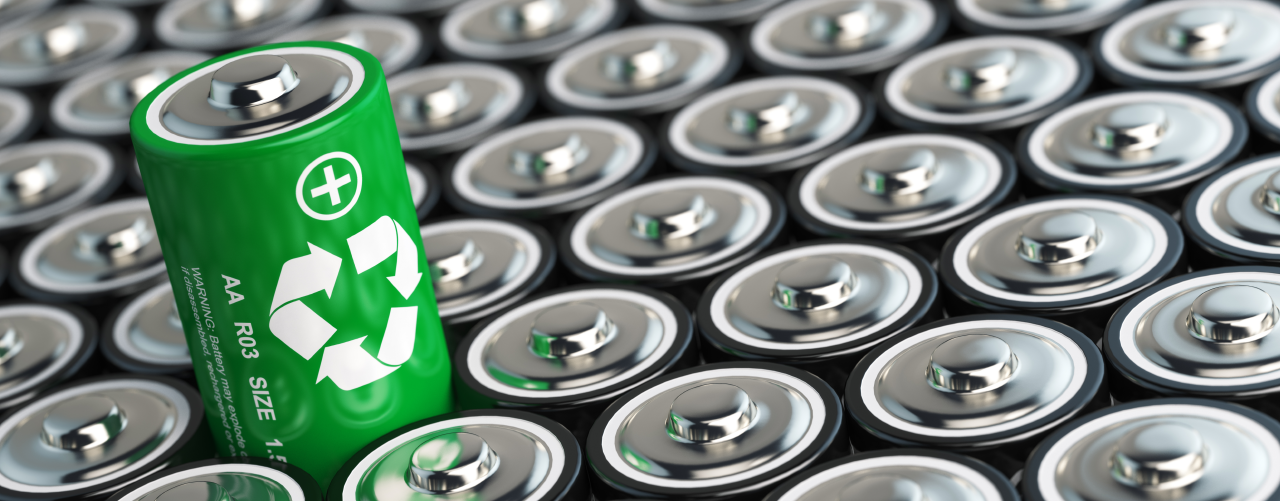



April 6, 2022



With demand for critical battery raw materials such as lithium, cobalt and nickel increasing, investments are flooding in to solve the emerging challenge posed by end-of-life lithium-ion batteries
April 1, 2022
Original article published in Fastmarkets
Stakeholders in the sector suggest that perfecting recycling capacity would offer opportunities to recover key materials that are in shortage of supply, from manufacturing scraps and end-of-life batteries. This would create a secondary supply of finite materials that would otherwise need to be freshly mined from a limited number of countries and transported to key-consuming regions with higher environmental costs.
A secondary market of recycled battery raw materials has the potential to help create domestic supply in key consuming regions while reducing dependence from external sources with all the associated risks in terms of sustainability, human rights and geopolitical tensions.
Lithium, cobalt and nickel are essential raw materials that power the batteries used in electric vehicles (EV), demand for which is expected to surge in the medium term.
Recycling is likely to play an increasingly relevant role with more adoption of EVs and a consequent rise in the number of batteries that reach its end of life.
According to Canada-based lithium-ion batteries recycling company Li-Cycle, the global lithium-ion battery recycling industry could have more than 3 million tonnes available for recycling by 2030, with the share attributable to transportation seeing the biggest increase. However, lithium-ion batteries can also be recovered from manufacturing scraps, energy storage systems and consumer’ electronics.
“We believe that recycling will play a key role in Europe as EV penetration increases and the aim to meet the need for a sustainable circular recovery of the key materials needed in the new energy space,” vice president for Li-Cycle operations in Europe, Elewout Depicker, told Fastmarkets.
Li-Cycle is a clean-tech company with projects underway in North America that aim to expand its footprint internationally into both Europe and Asia.
In Europe, Li-Cycle is planning to set up two lithium-ion-battery recovery plants, the so-called “spokes,” in Norway and Germany.
The Li-Cycle spoke in Germany is expected to be operational by late 2022 or early 2023, with a processing capacity of up to 10,000 tonnes of input material per year including manufacturing scraps and end-of-life batteries.
The second Li-Cycle spoke under construction in Norway is expected to be operational in early 2023, with a similar processing capacity.
According to data provided by Li-Cycle, around 5-10% of battery production is typically rejected as waste during the manufacturing process, creating significant recycling needs during EV ramp-up, in addition to building end-of-lifecycle supply. Since battery manufacturing capacity is expected to expand rapidly, it is critical to act timely on building up recycling capacity to maximize the amount of metals that can be recovered, a number of sources across the lithium-ion battery industry told Fastmarkets.
Li-Cycle, as well as other emerging lithium-ion batteries recycling companies, estimate that lithium-ion battery and battery manufacturing scrap recycling produces 70% less carbon emissions when compared with traditional mining processes.
In the near term, Li-Cycle estimates that in 2025 approximately 60% of the total lithium-ion batteries available for recycling will be in China, 16% in both Europe and North America, and the remaining 8% in the rest of the world.
“Recycling will play a huge part in providing a local supply of battery raw materials because spent [lithium-ion batteries] will probably have to be recycled locally, but it will still take considerable time to get to the stage where enough spent batteries are available,” William Adams, head of battery raw materials research at Fastmarkets, said.
“Li-Cycle aims to produce battery-grade end products for reuse in battery or other technical applications and to produce by-products reusable in the general economy.” Depicker added.
The company is currently also looking into the potential recovery process for solid state battery, an alternative technology to lithium-ion batteries.
The company’s strategy aims to recover key battery metals via a two-stage process involving an initial mechanical size reduction at decentralized spoke sites. Subsequently, the output product of multiple spokes is further processed via a hydrometallurgical/wet chemistry process at centralized hub sites, where inputs from multiple spokes are processed to recover each individual battery raw material.
According to Li-Cycle strategy, the spoke can produce a product, a so-called “black mass” that consists of a mix of cathode and anode battery materials, including lithium, nickel and cobalt, as well as graphite, copper and aluminum.
The black mass produced at spoke plants is fed into the hub, where the resulting output is high-purity battery chemicals such as battery-grade lithium carbonate, cobalt sulfate and nickel sulfate, it said.
Battery raw materials such as lithium, cobalt and nickel have all had significant price volatility over the past year, with tight supply and growing demand globally leaving many battery producers grappling with new price levels.
A steep price increase has been particularly observed in the lithium market, with demand outpacing available supply over the past year, sources said.
Fastmarkets assessed the lithium carbonate 99.5% Li2CO3 min, battery grade, spot prices, cif China, Japan & Korea at $70-73 per kg on Wednesday March 30, up more than 565% compared with the same time last year.
